 Previous Article
Previous Article
Which Outdoor Material is the Best?
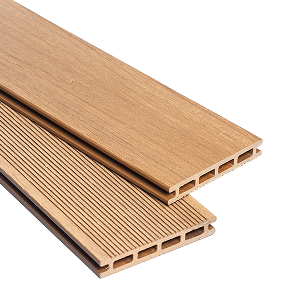
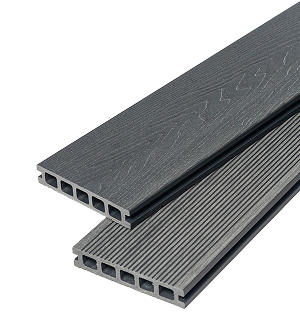
When researching composite decking, you’ll often hear the terms “stain-resistant” and “stain-proof” used interchangeably. They are not the same.
So, let’s be clear: No outdoor surface is completely stain-proof, but modern, high-quality composite boards are extremely stain-resistant. The key to this resistance lies in the type of board you choose.
If stain resistance is a major concern for you—especially for areas under trees or used for barbecues—understanding the difference between the two main types of composite decking is essential.
The single biggest factor in stain resistance is whether the board has a protective polymer “cap”.
These boards have a more porous surface where the wood fibres are exposed. Just like natural timber, this surface can absorb liquids like wine, grease, and oils, leading to stains if not cleaned immediately. They are also more prone to organic staining from mould and mildew if not cleaned regularly.
Modern boards are wrapped in a non-porous polymer shell or “cap”. This protective layer acts as a barrier, preventing liquids and grime from penetrating the board’s core. This makes them vastly superior when it comes to resisting stains.
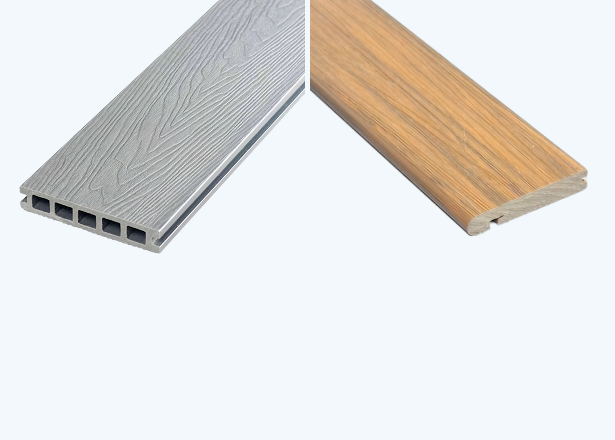
To demonstrate the difference, our engineering team conducted a 24-hour stain test on both uncapped and capped boards, using common household substances known for their staining power.
Red wine, grease, beer, vinegar, and rust.
After 24 hours, every single substance left a noticeable stain mark. The acidic vinegar and oily grease were particularly damaging.
After 24 hours, the capped boards showed zero residual stain marks. All substances were wiped away easily, leaving no trace.
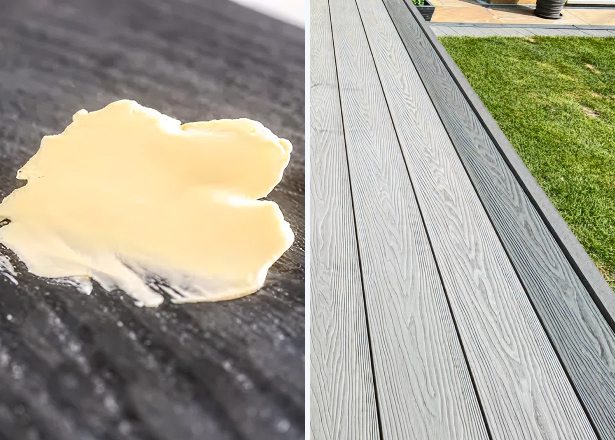
An Engineer’s Verdict: Our tests confirm that modern, capped composite decking is exceptionally stain-resistant. For homeowners, this means peace of mind and significantly less worry about everyday spills.
Even on highly resistant capped composite, it’s always best practice to clean spills as soon as possible. For tougher messes, here’s what to do.
In most cases, a simple clean is all you need. Use a solution of hot, soapy water (with an ammonia-free washing-up liquid) and a soft-bristle brush. Gently scrub along the grain of the boards and then rinse the area thoroughly with a garden hose.
Oil from food or BBQs should be dealt with immediately. Hot, soapy water is excellent for breaking down grease. Apply the solution and scrub with a soft brush before the oil has a chance to settle, then rinse well. For more stubborn vinegar and baking soda work excellently as well.
For organic stains like mildew or the white spots left by hard water, a diluted solution of white vinegar is highly effective. Apply it to the area, scrub gently with a soft brush, and then rinse thoroughly.
To remove these safely, first rinse the area with water to soften the droppings. Apply a little washing-up liquid and use a soft-bristle brush to gently scrub the stain away. Never use a sharp object to scrape the surface. Finish by rinsing the area completely.
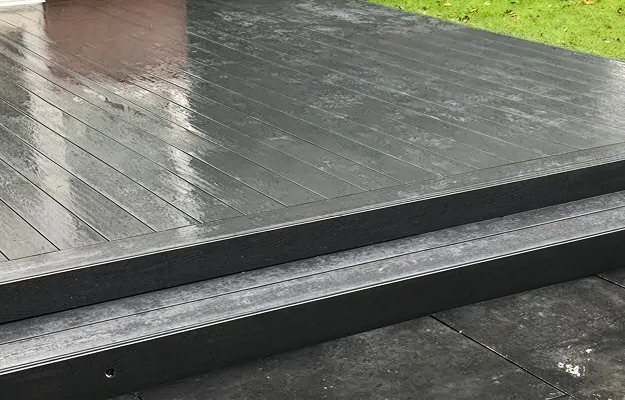
While no material is truly “stain-proof,” modern capped composite decking comes very close. Its engineered, non-porous surface provides robust protection against the vast majority of common household and garden stains, from red wine to grease.
If ultimate stain resistance and low maintenance are your top priorities, ensure you choose a high-quality, second-generation capped composite decking.
 Previous Article
Previous Article
Which Outdoor Material is the Best?

Wood vs Composite Decking: Which Is Right for Your Outdoor Space?